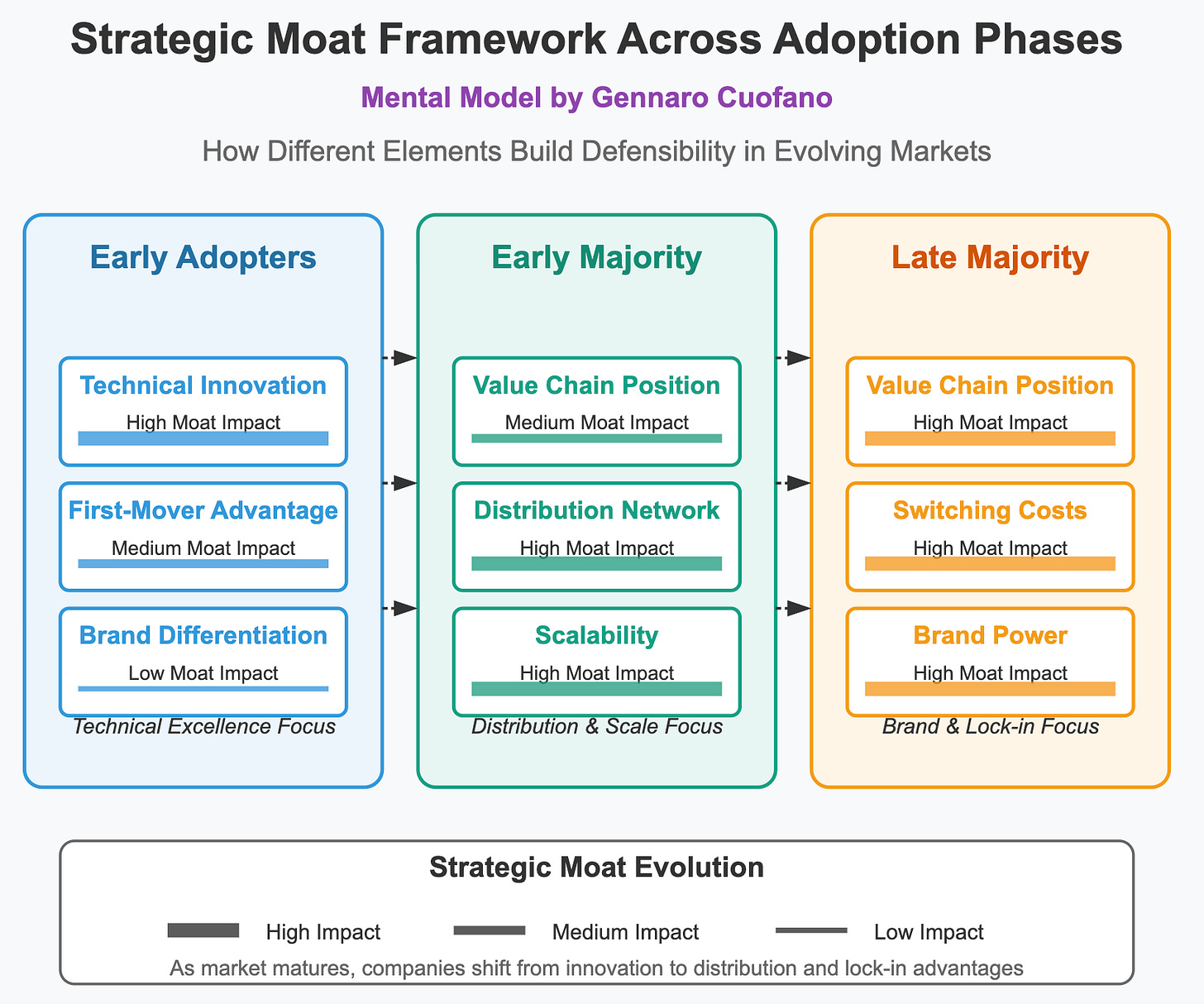Market Consolidation Dynamics in AI
Google launched several impressive updates at its Google I/O conference yesterday, creating a lot of buzz.
To me, Google (Alphabet) is among the top players, if not the top one, in the AI space when it comes to its holistic strategy. As I’ve highlighted many times, even if Google search might not survive, Alphabet will still thrive.
Yet, when we return to consumer adoption in AI, that is all about market consolidation dynamics.
When you hear things like “technology is all that matters” or “distribution is all that matters,” these are all simplistic statements that miss the context.
The evolution of competitive advantage in technology markets follows predictable general patterns as products move from early adopters to mainstream users.
To be clear, the real world is unpredictable, and anything can happen that breaks the whole structure of the consolidating patterns in a snap of a finger.
However, monitoring these patterns is critical, as once they consolidate, they become harder to break down in the short term.
For instance, before the ChatGPT Moment, which took us all by surprise, Google had remained a dominant player for over 20 years.
Thus, examining the recent AI adoption data provides compelling evidence that we're witnessing a classic market consolidation cycle, where early advantages in technical innovation give way to distribution power, ultimately leading to market lock-in through switching costs and brand dominance.


